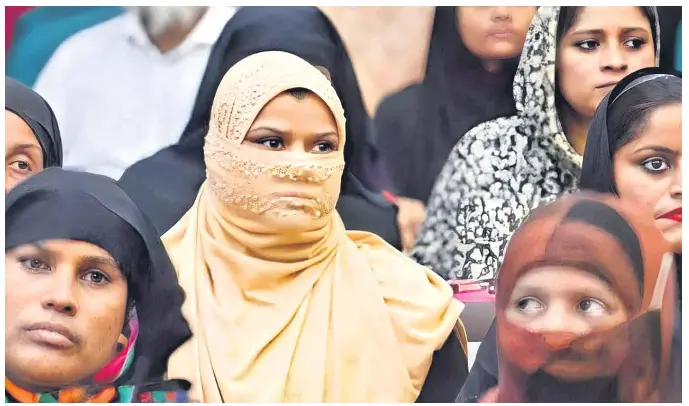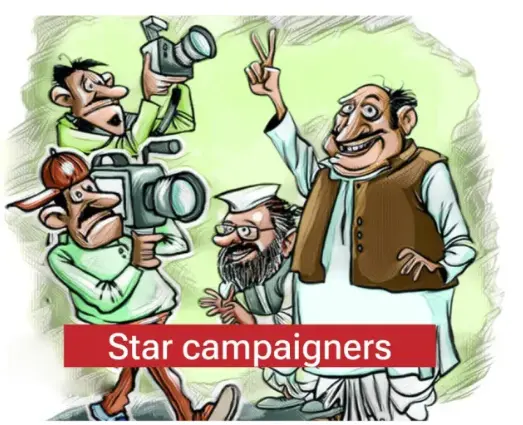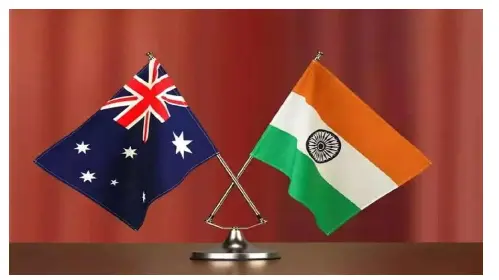Saturday, 27th April 2024
Request for Clarification on 2G Spectrum Scam Verdict by Centre
In News: Following the cancellation of 122 telecom licenses by the Supreme Court in 2012 due to the 2G spectrum scam, the Union government has submitted a request for a specific category of spectrum to be assigned through administrative procedures rather than competitive auctions.

- Definition of Airwaves/Spectrum
- Airwaves refer to radio frequencies within the electromagnetic spectrum capable of transmitting information wirelessly for various services, including telecommunications.
- Government Management and Allocation
- The government oversees and assigns airwaves to companies or sectors for their operational use.
- 2G Spectrum Scam Verdict
- Origins and Allegations: The alleged 2G spectrum allocation scam began in 2008 when the government sold 122 2G licenses on a first-come-first-serve (FCFS) basis to specific telecom operators.
- Charge Sheet: In April 2011, the Central Bureau of Investigation (CBI) filed a charge sheet alleging a loss of ₹30,984 crore to the exchequer due to irregularities in the allocation process.
- Matter Reaches Supreme Court
- Petitions: Petitions were filed in the Supreme Court alleging a ₹70,000 crore scam in the grant of telecom licenses in 2008.
- Verdict: In February 2012, the Supreme Court cancelled the licenses, advocating for competitive auctions as the sole method for spectrum allocation.
- Competitive Auctions for Allocating Natural Resources
- Judicial Emphasis: The apex court emphasized competitive auctions as the preferred route for allocating spectrum.
- State's Responsibility: It stressed the state's responsibility to ensure a non-discriminatory auction process with wide participation.
- Centre's Plea for Administrative Processes
- Multiple Purposes: The government argued that spectrum assignment is vital not only for commercial telecom but also for sovereign and public interest functions.
- Unique Uses: Some spectrum categories have unique uses, making auctions less suitable.
- Demand-Supply Dynamics: Administrative allocation is necessary when demand is lower than supply or for specific purposes like space communication.
- 2012 Presidential Reference
- Interpretation of Verdict: The government referred to a Constitution Bench's remarks on a Presidential reference, clarifying that while auctions are mandated for spectrum, other natural resources may have different allocation methods.
- The Telecommunications Act, 2023
- Empowerment: The law enables the government to assign spectrum through administrative processes, particularly for entities listed in the First Schedule.
- Secondary Assignees: It allows assigning parts of spectrum to secondary assignees and terminating underutilized assignments.
Source: TH
Social Media Regulation in India
In News: The Supreme Court of India has expressed apprehensions regarding the increasing misuse of social media platforms to disseminate misinformation about ongoing court cases.

Regulation of Social Media in India
Legal Framework
- The Information Technology Act, 2000 serves as the primary law governing electronic communication, including social media platforms.
- Section 69A of the IT Act empowers the government to block public access to information under specific conditions related to national security, public order, and more.
- Section 79(1) provides intermediaries like social media platforms exemption from liability for third-party content under certain conditions, although Section 66A was struck down by the Supreme Court due to freedom of speech concerns.
Intermediary Guidelines and Digital Media Ethics Code (2021)
- Mandates social media platforms to exercise greater diligence in content moderation and ensures online safety by promptly removing inappropriate content.
- Users must be educated about privacy policies and prohibited content, including material threatening national security or defamatory content.
Impacts on Society
- Youth and Students:
- Pros: Access to information, networking opportunities, and platforms for activism.
- Cons: Risk of cyberbullying and distraction from studies.
- Women:
- Pros: Provides a platform for advocacy and expression.
- Cons: Perpetuates unrealistic beauty ideals and harassment.
- LGBTQIA+:
- Pros: Empowers individuals through visibility and advocacy.
- Cons: Exposure to cyberbullying and privacy risks.
- Businesses and Entrepreneurs:
- Pros: Cost-effective marketing and global reach.
- Cons: Vulnerability to negative feedback and public relations crises.
- Government and Politics:
- Pros: Enhanced communication with citizens and transparency.
- Cons: Spread of misinformation and privacy concerns.
- Judiciary:
- Pros: Enhances transparency in legal proceedings.
- Cons: Risk of misinformation due to misinterpretation.
- Media and Journalism:
- Pros: Instant news dissemination and audience engagement.
- Cons: Challenges of fake news and loss of traditional revenue models.
- Elderly and Less Tech-Savvy Individuals:
- Pros: Connectivity and access to information.
- Cons: Digital divide and susceptibility to scams.
Measures for Improvement:
- Algorithmic Transparency: Platforms should disclose and explain their algorithms to mitigate biases.
- Digital Literacy Programs: Comprehensive education to empower users in combating misinformation.
- AI Moderation Tools: Advanced tools for content moderation while protecting freedom of expression.
- Privacy-Enhancing Technologies: Investment in technologies for user privacy and security.
- Ethical Design Practices: Prioritize user well-being and meaningful engagement.
- Rewarding Positive Content Creation: Incentivize informative and community-building content creation.
|
UPSC Previous Year Questions Mains (2013) Q. What are social networking sites and what security implications do these sites present? Mains (2023) Q. Child cuddling is now being replaced by mobile phones. Discuss its impact on the socialization of children. |
Source: TH
Gender Disparity in STEM Faculty Positions in India
In News: A considerable gender disparity is evident in Indian STEM (science, technology, engineering, and math) faculties, as indicated by a BiasWatchIndia study, which found that only 13.5% of faculty members among 98 universities and institutes are women.
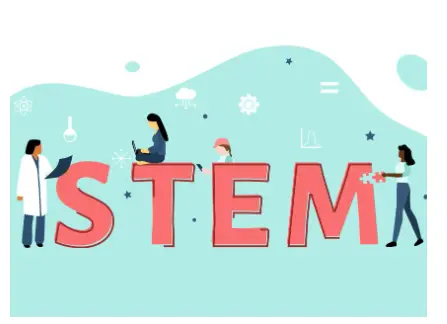
Addressing the Gender Disparity in Indian STEM Faculties
- Social Bias Against Women in Certain STEM Fields
- Fields like Biology, considered "soft sciences," witness higher female representation compared to Engineering and Physics.
- Societal biases dissuade women from pursuing fields perceived as less feminine, impacting their choices in higher education and research.
- Lack of Support During PostDoc to Faculty Transition
- The transition from postdoc to faculty often coincides with family planning, presenting challenges for women.
- Societal pressure favoring family over career ambitions and inadequate support structures exacerbate the issue.
- Toxic Workplace Environment
- Many women leave STEM academia due to a toxic work environment.
- Factors include disrespect, limited access to resources, and fewer advancement opportunities compared to male colleagues.
- Difficulty Accessing Gender Representation Data
- Absence of a centralized database tracking women faculty in STEM across India hinders understanding of the gender gap and monitoring progress.
Steps to Bridge the Gender Gap in Indian STEM Faculties
- Flexible Work Arrangements and On-site Childcare
- Offer flexible work schedules, part-time options, and on-site childcare facilities for female faculty members to address work-life balance challenges.
- Programs like DST's WISE-KIRAN can be expanded to provide targeted support and flexible work arrangements.
- "Back to Academia" Fellowships
- Create fellowship programs supporting women who took a break from academia to raise families, providing resources and mentorship to re-enter the research and teaching track.
- International Collaboration and Exchange Programs
- Encourage female faculty participation in international research collaborations and exchange programs to broaden perspectives and networks.
- Visibility and Recognition
- Highlight and celebrate achievements of female faculty through awards, public recognition, and media coverage to boost morale and inspire others.
- Women Safety and Data-Led Development
- Implement robust policies addressing workplace harassment and ensuring equal opportunities to retain female talent.
- Incorporate data collection on female faculty to create a central database for better-targeted interventions.
|
UPSC Previous Year Questions Mains (2019) Q.1 “Empowering women is the key to control population growth”. Discuss. Mains (2015) Q.2 Discuss the positive and negative effects of globalisation on women in India? Mains (2013) Q.3 Male membership needs to be encouraged in order to make women’s organisations free from gender bias. Comment. |
Source: TOI
Draft Rules Proposed by the RBI for Payment Aggregators
In News: Earlier this month, the Reserve Bank of India (RBI) released two consultation papers to improve the regulation of offline Payment Aggregators (PAs).
Understanding Payment Aggregators (PAs) and RBI's Draft Rules
Payment Aggregators Definition and Functionality
- Payment aggregators (PAs) serve as intermediaries between buyers, sellers, and payment gateways, facilitating online transactions by collecting payments from customers on behalf of merchants.
- They collect payments from customers using various methods and transfer the funds to the merchant after deducting service fees or commission.
- PAs ensure that the funds are settled in the merchant's bank account within a specified time frame and prioritize the security of transactions through encryption and other measures.
- They offer APIs and plugins for merchants to integrate into their websites or apps for accepting payments, with notable examples including Razorpay, Paytm, and PayPal in India.
RBI's Draft Rules Overview
- The Reserve Bank of India (RBI) aims to extend existing regulations governing PAs' activities in e-commerce to offline transactions as well, seeking convergence in regulatory standards.
- The draft rules come in response to observations made in June 2022, aiming for regulatory synergy and addressing irregularities highlighted by incidents such as the Paytm Payments Bank crisis.
- The proposed norms outline detailed provisions to enhance transparency and accountability in the PA ecosystem, drawing from lessons learned and aiming to prevent similar crises.
Mandatory Registration and Financial Requirements
- The focus of mandatory registration primarily targets non-bank PAs and their offline extensions, with banks offering physical PA services under their normal banking relationship exempted.
- Non-bank PAs must have a minimum net worth of ₹15 crore at the time of application, extending to ₹25 crore by March 31, 2028, with similar requirements for new applicants.
- Existing offline operators unable to comply with the approval-seeking timeframe are directed to wind up operations by July 31, 2025, while banks failing to produce evidence of their application face account closure.
Enhanced KYC Requirements
- The proposed regulations aim to prevent onboarded merchants from collecting and settling funds for services not offered on their platforms by categorizing merchants into small and medium categories.
- Small merchants, with annual turnover below ₹5 lakh and not registered under GST, must undergo 'contact point verification' and verify bank accounts.
- Medium merchants, with turnover below ₹40 lakhs and not GST-registered, also undergo contact point verification, with additional document verification for the proprietor, beneficial owner, or attorney holder.
Data Privacy Provisions
- From August 1, 2025, entities, aside from card issuers and networks, are barred from storing data for proximity payments, with a mandate to purge previously stored data.
- Limited data storage for transaction tracking and reconciliation is permitted, including the last four digits of the card number and issuer's name, with compliance responsibility falling on card networks.
Source: TH
National Institute for the Empowerment of Persons with Intellectual Disabilities (NIEPID)
In News: The Union government is anticipated to introduce a novel diagnostic test developed by the National Institute for the Empowerment of Persons with Intellectual Disabilities (NIEPID) aimed at identifying specific learning disabilities (SLDs) in adults across India.
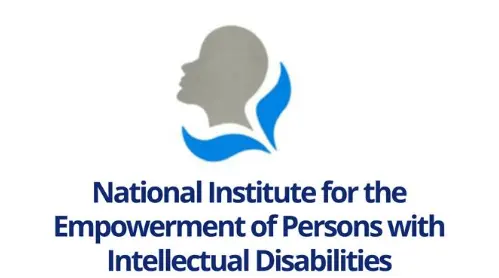
Exploring the National Institute for the Empowerment of Persons with Intellectual Disabilities (NIEPID)
- Background:
- Established in 1984, NIEPID (formerly the National Institute for the Mentally Handicapped) operates as an autonomous body under the administrative oversight of the Department of Empowerment of Persons with Disabilities (Divyangjan), Ministry of Social Justice & Empowerment.
- It is committed to delivering high-quality services to Persons with Intellectual Disabilities (Divyangjan) in alignment with national interests.
- Functions:
- NIEPID serves as the apex body responsible for training, research, and surveys related to intellectual disability within the country.
- Headquartered in Secunderabad, Telangana, it operates regional centers in Kolkata, Navi Mumbai, and Noida.
- The institute empowers individuals with intellectual disabilities (Divyangjan) through a comprehensive range of rehabilitation interventions, including educational, therapeutic, vocational, employment, leisure, social activities, sports, and cultural programs, fostering their full participation in society.
- Objectives:
- Human Resources Development
- Research and Development
- Development of care and rehabilitation models
- Documentation and dissemination of knowledge
- Provision of consultancy services to voluntary organizations
- Implementation of Community Based Rehabilitation initiatives
- Extension and Outreach programs
- Academic Offerings:
- NIEPID offers specialized training courses such as Early Intervention, Rehabilitation Psychology, Special Education, and Disability Rehabilitation at the Masters level to ensure optimal results in empowering individuals with intellectual disabilities.
- Collaborative Efforts:
- The institute organizes international and national-level conferences, seminars, and workshops focusing on Persons with Intellectual Disabilities (Divyangjan) in collaboration with prominent voluntary organizations and parent associations, facilitating knowledge exchange and advocacy initiatives.
Source: TH
Advanced Composite Solar Sail System
In News: Recently, NASA achieved a successful launch of its Advanced Composite Solar Sail System spacecraft from New Zealand.
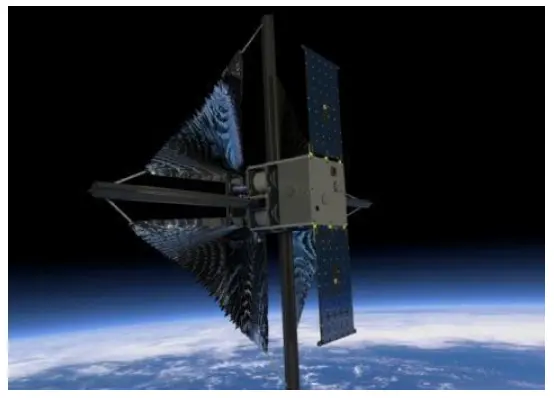
Exploring the Advanced Composite Solar Sail System (ACS3)
- Introduction:
- ACS3 is a NASA technology demonstration mission aimed at evaluating solar sail structures for future small spacecraft engaged in deep space missions requiring extended, low-thrust propulsion.
- Launch and Components:
- Launched on April 23, 2024, ACS3 will deploy a sail approximately the size of a small apartment from a spacecraft the size of a toaster oven.
- At its core, ACS3 is a CubeSat, adhering to standardized dimensions, featuring four 7-meter-long deployable composite booms.
- Solar Sailing:
- Similar to how a sailboat is propelled by wind in a sail, solar sails utilize sunlight pressure for propulsion, eliminating the need for conventional rocket propellant.
- Small spacecraft have demonstrated the capability to alter their orbits using solar sails, expanding their potential applications.
- Future solar sail missions will require larger sails and lighter materials to optimize performance.
- Innovative Technology:
- ACS3 employs lightweight carbon fiber sail booms instead of traditional metal booms, marking the first test of this technology in space.
- Understanding Solar Sailing:
- Solar sailing exploits the momentum of photons, which, although massless, possess momentum.
- When sunlight reflects off a shiny solar sail, some of its momentum is transferred, providing the sail with a gentle push.
- This continuous push, albeit subtle, accumulates over time, potentially imparting more thrust to a spacecraft than traditional chemical rockets.
- Solar sails enable access to unique destinations challenging or inaccessible with other propulsion systems and hold promise for interstellar travel.
Source: News18
Phi-3-mini
In News: Recently, Microsoft introduced the newest iteration of its 'lightweight' AI model, known as Phi-3-Mini.
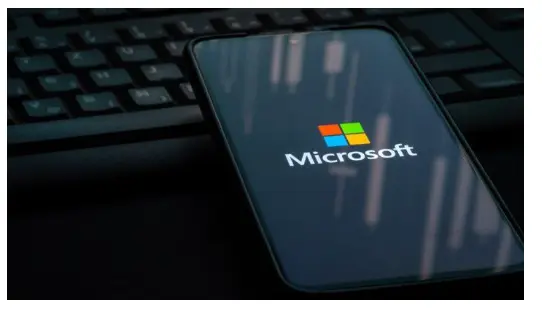
Exploring Phi-3-mini: A Small Language Model by Microsoft
- Introduction:
- Phi-3-mini is believed to be the first of three small models slated for release by Microsoft.
- It has reportedly demonstrated superior performance compared to models of similar size and the next size up across various benchmarks, including language, reasoning, coding, and mathematics.
- Key Features:
- It is the inaugural model in its category to support a context window of up to 128K tokens without compromising quality.
- The context window refers to the amount of conversation an AI can read and write at any given time, measured in tokens.
- Phi-3-mini is a 3.8B language model, accessible on AI development platforms such as Microsoft Azure AI Studio, Hugging Face, and Ollama.
- It offers two variants: one with a 4K content-length and another with 128K tokens.
- Differentiation from Large Language Models (LLMs):
- Phi-3-mini belongs to the category of Small Language Models (SLMs), representing streamlined versions of large language models.
- In contrast to LLMs, SLMs are more cost-effective to develop and operate and perform optimally on smaller devices like laptops and smartphones.
- SLMs excel in resource-constrained environments, including on-device and offline inference scenarios, making them ideal for applications such as chatbots or virtual assistants.
- They can be tailored for specific tasks, achieving accuracy and efficiency with targeted training, requiring significantly less computing power and energy compared to LLMs.
- SLMs also exhibit differences in inference speed and latency due to their compact size, enabling quicker processing and rendering them economically attractive to smaller organizations and research groups.
Source: IE
Constitutional Promise of Autonomy: Article 244(A)
In News: Candidates from all political parties contesting in Assam's predominantly tribal Diphu Lok Sabha constituency have recently committed to enforcing Article 244(A) of the Constitution, with the objective of creating an autonomous entity referred to as a 'state within a state.'
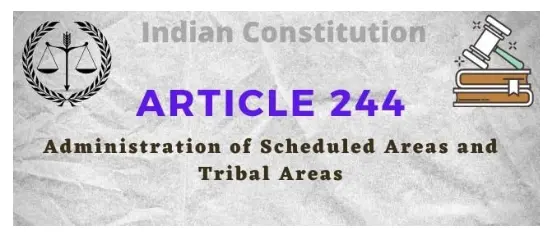
About Article 244(A)
- Article 244(A) of the Indian Constitution allows Parliament to enact legislation establishing an autonomous state within the State of Assam, encompassing tribal areas specified in the Sixth Schedule, as added through the Twenty-second Amendment Act in 1969.
Understanding the Sixth Schedule of the Indian Constitution
- Definition and Coverage: The Sixth Schedule pertains to the administration of tribal areas in Assam, Meghalaya, Tripura, and Mizoram.
- Autonomous Districts: Tribal areas within these states are administered as autonomous districts, remaining under the state's executive authority. The governor possesses the power to reorganize these districts, including adjusting boundaries and names, or dividing them into multiple autonomous regions to accommodate diverse tribal populations.
- Application of Laws: Acts of Parliament or state legislatures do not directly apply to these districts unless specifically adapted with modifications.
- Role of Autonomous District Councils: Each autonomous district has a district council comprising 30 members, with 4 nominated by the governor and 26 elected through adult franchise for a standard term of 5 years, unless dissolved earlier. These councils have legislative powers over specified matters such as land, forests, village administration, marriage and divorce, among others, subject to the governor's assent.
- Judicial Functions: Autonomous district councils can establish village councils or courts for trying suits and cases between tribes, with appeals heard by designated authorities whose jurisdiction is determined by the governor.
- Governor's Authority: The governor retains authority to appoint commissions to review district administration matters and can dissolve councils based on their recommendations.
|
UPSC Previous Year Questions Prelims (2012) Q. Which of the following provisions of the Constitution of India have a bearing on Education?
Select the correct answer using the codes given below: (a) 1 and 2 only (b) 3, 4 and 5 only (c) 1, 2 and 5 only (d) 1, 2, 3, 4 and 5 Ans: (d) Mains (2016) Q. Why are the tribals in India referred to as ‘the Scheduled Tribes? Indicate the major provisions enshrined in the Constitution of India for their upliftment. |
Source: IE
Inflammatory Bowel Disease
In News: Recently, there has been a global increase in the prevalence of Inflammatory Bowel Disease (IBD), which primarily includes Ulcerative Colitis and Crohn’s Disease.
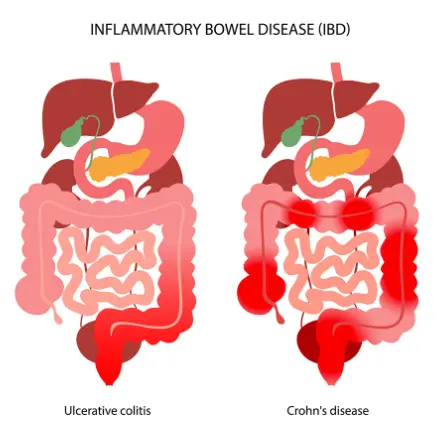
Understanding Inflammatory Bowel Disease (IBD) and its Challenges in India
- Inflammatory Bowel Disease (IBD) is a chronic inflammatory condition affecting the gastrointestinal (GI) tract, encompassing two main forms:
- Crohn's disease, which can impact any part of the digestive tract and often affects deeper layers of the bowel wall.
- Ulcerative colitis, limited to the inner lining of the large intestine (colon) and rectum, with continuous inflammation in severe cases.
- The exact cause of IBD remains unknown, but it is believed to result from a complex interplay of genetics, immune system dysfunction, and environmental factors.
- Common symptoms of IBD include abdominal pain and cramping, bloody diarrhea, urgent bowel movements, weight loss, and fatigue.
- While there is no cure for IBD, treatment aims to manage symptoms and induce remission through medications, dietary modifications, and in some cases, surgery.
- In India, the incidence of IBD has nearly doubled from 1990 to 2019, highlighting the need for early detection to improve treatment outcomes.
- Diagnosing IBD in India poses unique challenges, particularly in distinguishing between Crohn’s Disease and intestinal tuberculosis due to similar clinical symptoms.
- Lifestyle factors, such as the adoption of a Westernized diet, are implicated in the rising incidence of IBD in India.
|
UPSC Previous Year Questions Prelims (2022) Q. Which one of the following statements best describes the role of B cells and T cells in the human body? (a) They protect the body from environmental allergens. (b) They alleviate the body’s pain and inflammation. (c) They act as immunosuppressants in the body. (d) They protect the body from diseases caused by pathogens. Ans: (d) Prelims (2021) Q. In the context of hereditary diseases, consider the following statements:
Which of the statements given above is/are correct? (a) 1 only (b) 2 only (c) Both 1 and 2 (d) Neither 1 nor 2 Ans: (c) |
Source: TH
Nephrotic Syndrome
In News: Researchers from Kerala have documented a series of cases linking the regular use of fairness creams to nephrotic syndrome.
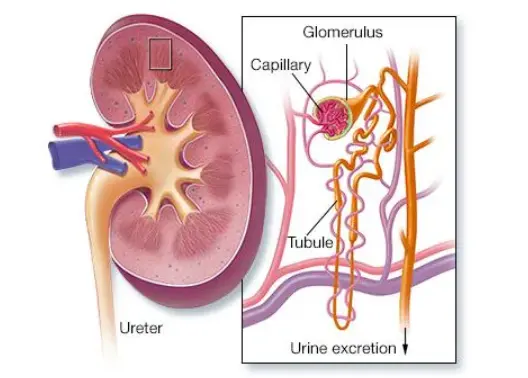
Understanding Nephrotic Syndrome
- Nephrotic syndrome is a kidney disorder characterized by excessive protein passing into the urine, primarily resulting from dysfunction in the kidney's filters, known as glomeruli.
- The kidneys utilize filtering units called nephrons to remove waste and excess fluid from the blood. Each nephron contains a filter, or glomerulus, which facilitates the removal of waste products like urea, creatinine, and acids while retaining necessary proteins and cells in the blood.
- When the glomeruli become inflamed, as seen in nephrotic syndrome, excessive protein leakage occurs, leading to symptoms such as severe swelling (edema), foamy urine due to excess protein, high levels of fat and cholesterol in the blood (hyperlipidemia), weight gain from fluid retention, fatigue, and loss of appetite.
- Nephrotic syndrome is not a specific kidney disease but can arise from various conditions that damage the kidney's filtering units, including nephritis, diabetes, lupus, and others. These conditions may solely affect the kidneys or involve other parts of the body as well.
- Complications of nephrotic syndrome can be serious and include blood clots (thrombosis), increased infection risk due to loss of immune proteins, high blood pressure (hypertension), and kidney problems ranging from brief to chronic kidney disease and kidney failure.
- Treatment of nephrotic syndrome focuses on addressing the underlying cause and managing associated symptoms. This typically involves medications to control inflammation, high blood pressure, and high cholesterol levels, as well as dietary modifications to reduce swelling and infection risks.
Source: TH
Questioning the occurrences akin to "rain washes out play" during polls.
In News: The outcomes in Surat and Arunachal Pradesh highlight a broader debate on elections appearing "free and fair" despite no votes being cast.
Phenomenon of Unopposed Election:
Definition and Implications
- An unopposed election occurs when a candidate wins without facing any competition, granting them sole representation without a democratic selection process.
- It presents a unique legal and procedural situation where victory is achieved without active participation or choice from the electorate.
Examples and Existing Rules
- Instances like the Surat Lok Sabha seat and various Assembly seats in Arunachal Pradesh exemplify unopposed elections resulting from disqualifications or withdrawals.
- Rules such as Rule 11 of the Conduct of Election Rules 1961 and Section 53 of the Representation of the People Act, 1951, outline procedures for declaring unopposed candidates as elected.
Quandary and Concerns
- The absence of opposing candidates raises questions regarding the electorate's ability to exercise options such as the None of the Above (NOTA) provision.
- The democratic essence is challenged when elections lack contestants, potentially undermining the representational integrity of the electoral process.
Parallels with Financial Rules
- Analogous to procurement practices, the electoral system aims for fairness, transparency, and adequate representation despite the absence of competition.
- Despite their disparate nature, both systems require careful adherence to established procedures to ensure legitimacy and public trust.
Challenges Posed by Uncontested Elections
- Paradox of Electoral Exclusion
- Unopposed elections exclude voters from actively participating in the democratic process, leading to representatives being chosen without voter input.
- This discrepancy raises concerns about the manipulation of electoral outcomes and the erosion of democratic principles.
- Bias Towards Contesting Candidates
- Existing electoral laws favor contesting candidates, potentially disregarding the collective will of voters in the absence of alternatives.
- The system's focus on procedural expediency may undermine the fundamental tenets of democracy, emphasizing participation and choice.
- Need for Reforms
- Reform proposals include introducing minimum vote percentage thresholds for winning candidates and transferring uncontested seats to the nominated category.
- A comprehensive debate on electoral reforms is essential to address concerns surrounding unopposed elections and uphold democratic values.
Conclusion
Efforts to address the challenges posed by unopposed elections necessitate a thorough examination of electoral processes and the implementation of reforms to safeguard democratic principles and ensure meaningful citizen participation.
Source: DH
Practice Questions - Current Affairs 27-04-2024
Q1. Consider the following statements regarding indelible ink
- It contains silver Iodide, a colorless compound that becomes visible when exposed to ultraviolet light, including sunlight
- Mysore Paints & Varnish Ltd. has been licensed to manufacture the ink since 1962
Select the correct answer using code given below:
- Both Statement-I and Statement-II are correct and Statement-II is the correct explanation for Statement-I
- Both Statement-I and Statement-II are correct and Statement-II is not the correct explanation for Statement-I
- Statement-I is correct but Statement-II is incorrect
- Statement-I is incorrect but Statement-II is correct
Q2. Consider the following statements regarding Advance Pricing Agreements (APAs)
- APAs are Informal agreements between taxpayers and tax authorities regarding transfer prices.
- Unilateral APAs guarantee a protection for double taxation for transactions with foreign entities.
- Advance Pricing Agreements ensures confidentiality of sensitive business data
How many of the statements given above are correct?
- Only one
- Only two
- All three
- None
Q3. Consider the following statements regarding Plastic Waste
- In 2022, India implemented the Plastic Waste Management Amendment Rules (2021), prohibiting 19 categories of single-use plastics
- Excluded from the ban are plastic bottles and multi-layered packaging boxes, such as those used in milk cartons
Which of the statements given above is/are correct?
- 1 only
- 2 only
- Both 1 and 2
- Neither 1 nor 2
Q4. Consider the following statements regarding India’s decision to levy an equalization tax of 6% on online advertisement services offered by non-resident entities
- It is introduced as a part of the Income Tax Act
- Non-resident entities that offer advertisement services in India can claim a tax credit in their home country under the “Double Taxation Avoidance Agreements”.
How many of the statements given above are correct?
- 1 Only
- 2 Only
- Both
- None
Q5. With reference to Panhala Fort consider the following statements
- Panhala Fort Originated back in the 11th century CE under the rule of the Shilahara dynasty ruler Bhoja.
- Ambarkhana, situated at the fort's center, consists of three buildings named Ganga, Yamuna, and Saraswati, each with sixteen bays and a flat vault with a hole on top
Which of the statements given above is/are not correct?
- 1 only
- 2 only
- Both 1 and 2
- Neither 1 nor 2
Q6. Consider the following statements regarding India and Australia bilateral relationship
- India and Australia established diplomatic relations during the pre-Independence period with the opening of the India Trade Office in Sydney in 1941.
- India and Australia elevated their bilateral relationship from a 'Strategic Partnership' in 2009 to a Comprehensive Strategic Partnership (CSP) in 2020.
Select the correct answer using code given below:
- Both Statement-I and Statement-II are correct and Statement-II is the correct explanation for Statement-I
- Both Statement-I and Statement-II are correct and Statement-II is not the correct explanation for Statement-I
- Statement-I is correct but Statement-II is incorrect
- Statement-I is incorrect but Statement-II is correct
Q7. Consider the following statements regarding Pulses in India
- India is the largest producer, consumer, and importer of pulses globally.
- The import value of pulses has decreased significantly in the last year owing to comprehensive strategy by the Indian government to increase pulse production.
- Pulses thrive in temperatures ranging between 20-27°C and require minimal rainfall of about 25-60 cm.
How many of the statements given above are correct?
- Only one
- Only two
- All three
- None
Q8. Consider the following statements regarding Hydrocarbons
- Hydrocarbons are classified into alkanes (saturated), alkynes (unsaturated with double bonds), alkenes (unsaturated with triple bonds), and aromatic hydrocarbons (arenes) based on structure and bonding.
- Naturally occurring in plants, trees, and fossil fuels, hydrocarbons constitute the primary components of petroleum and natural gas.
Which of the statements given above is/are correct?
- 1 only
- 2 only
- Both 1 and 2
- Neither 1 nor 2
Q9. Consider the following statements regarding National Organ and Tissue Transplant Organization (NOTTO)
- The National Organ and Tissue Transplant Organization (NOTTO) is a national-level entity established under the Directorate General of Health Services.
- National Tissue Bank is one of the divisions under the NOTTO.
- Maintenance of records and data protection of the donors is not the direct mandate of NOTTO and this is done by a specialised body mandated under Transplantation of Human Organs (Amendment) Act 2011.
How many of the statements given above are correct?
- Only one
- Only two
- All three
- None
Q10. With reference to Rampage Missile consider the following statements
- The Rampage Missile, developed jointly by DRDO and Israeli Military Industries Systems, serves as a long-range, supersonic, air-to-ground precision strike weapon
- Equipped to carry up to 1500 kilograms of explosives, the missile offers flexibility with a blast fragmentation or general-purpose warhead, tailored to mission requirements
Which of the statements given above is/are not correct?
- 1 only
- 2 only
- Both 1 and 2
- Neither 1 nor 2
Q11. Consider the following statements regarding Tundra Ecosystem
- Tundra ecosystems are treeless regions located in the Arctic and on mountain peaks, characterized by cold and windy climates with heavy rainfall
- Alpine Tundra prevails above the tree line in mountain ranges worldwide, including the Rockies, the Andes, the Himalayas, and the Alps
Select the correct answer using code given below:
- Both Statement-I and Statement-II are correct and Statement-II is the correct explanation for Statement-I
- Both Statement-I and Statement-II are correct and Statement-II is not the correct explanation for Statement-I
- Statement-I is correct but Statement-II is incorrect
- Statement-I is incorrect but Statement-II is correct
Q12. Consider the following statements regarding Star campaigners.
- Article 77 of the Indian Constitution outlines the regulations concerning the expenditure incurred by 'leaders of a political party', commonly referred to as 'star campaigners'.
- A recognised political parties (national or State) is allowed to appoint a maximum of 40 Star campaigners, while registered unrecognised political parties can appoint up to 20.
- If a candidate travel with a Star-campaigner, 100% of the campaigner's travel expenses are attributed to the candidate.
How many of the statements given above are correct?
- Only one
- Only two
- All three
- None
Q13. With reference to Global Forest Watch consider the following statements
- As per Global Forest Watch report between 2002 and 2023, India experienced a substantial loss of 414,000 hectares of humid primary forest, equivalent to approximately 41% of the total tree cover.
- The Forest Survey of India conducts biennial assessments of forest cover, with the latest assessment indicating positive strides in forest conservation efforts
Which of the statements given above is/are not correct?
- 1 only
- 2 only
- Both 1 and 2
- Neither 1 nor 2
Q14. Consider the following statements regarding Electoral Reforms in India
- The 62nd Constitutional Amendment Act of 1984 reduced the voting age from 21 years to 18 years for Lok Sabha and assembly elections
- The Election Commission of India became a Multi-Member Commission for the first time in 1989
- Conducting and publishing results of exit polls during elections were prohibited by a 2008 provision
How many of the statements given above are correct?
- Only one
- Only two
- All three
- None
Q15. With reference to Global Forest Watch consider the following statements
- As per Global Forest Watch report between 2002 and 2023, India experienced a substantial loss of 414,000 hectares of humid primary forest, equivalent to approximately 41% of the total tree cover.
- The Forest Survey of India conducts biennial assessments of forest cover, with the latest assessment indicating positive strides in forest conservation efforts
Which of the statements given above is/are not correct?
- 1 only
- 2 only
- Both 1 and 2
- Neither 1 nor
Q16. Consider the following statements regarding TINA factor
- TINA stands for "There Is No Alternative," which is a mindset that arises when investors perceive no viable alternatives due to conditions like low returns or high volatility in other investment options
- The TINA factor often leads to the formation of price bubbles as it drives investors towards a limited range of assets, inflating their prices beyond realistic levels due to perceived scarcity of better options
Select the correct answer using code given below:
- Both Statement-I and Statement-II are correct and Statement-II is the correct explanation for Statement-I
- Both Statement-I and Statement-II are correct and Statement-II is not the correct explanation for Statement-I
- Statement-I is correct but Statement-II is incorrect
- Statement-I is incorrect but Statement-II is correct
Q17. Consider the following statements regarding Asian Infrastructure Investment Bank
- AIIB has more than 80 member nations
- India is the largest shareholder in AIIB
- AIIB does not have any members from outside Asia
How many of the statements given above are correct?
- Only one
- Only two
- All three
- None
Q18. Consider the following statements regarding Voyager 1 and Voyager 2 Spacecraft
- Launched by NASA on September 5, 1977, Voyager 1 is the twin probe of Voyager 2 with main aim of exploring the outer Solar System and beyond.
- Voyager 2 is the first spacecraft to enter interstellar space.
Which of the statements given above is/are correct?
- 1 only
- 2 only
- Both 1 and 2
- Neither 1 nor 2
Q19. Consider the following statements
- Chlorofluorocarbons, known as ozone-depleting substances, are used in the production of plastic foams.
- Chlorofluorocarbons, known as ozone-depleting substances, are used in the production of tubeless tyres.
- Chlorofluorocarbons, known as ozone-depleting substances, are used in cleaning certain electronic components.
How many of the statements given above are correct?
- Only one
- Only two
- All three
- None
Q20. With reference to Golden Trevally Fish and Central Marine Fisheries Research Institute consider the following statements
- The Golden Trevally is also known as the Golden Kingfish.
- Central Marine Fisheries Research Institute is headquartered in Tamil Nadu.
Which of the statements given above is/are not correct?
- 1 only
- 2 only
- Both 1 and 2
- Neither 1 nor 2
Share the article
Edukemy’s Current Affairs Quiz is published with multiple choice questions for UPSC exams
MCQ
Get Latest Updates on Offers, Event dates, and free Mentorship sessions.

Get in touch with our Expert Academic Counsellors 👋
FAQs
UPSC Daily Current Affairs focuses on learning current events on a daily basis. An aspirant needs to study regular and updated information about current events, news, and relevant topics that are important for UPSC aspirants. It covers national and international affairs, government policies, socio-economic issues, science and technology advancements, and more.
UPSC Daily Current Affairs provides aspirants with a concise and comprehensive overview of the latest happenings and developments across various fields. It helps aspirants stay updated with current affairs and provides them with valuable insights and analysis, which are essential for answering questions in the UPSC examinations. It enhances their knowledge, analytical skills, and ability to connect current affairs with the UPSC syllabus.
UPSC Daily Current Affairs covers a wide range of topics, including politics, economics, science and technology, environment, social issues, governance, international relations, and more. It offers news summaries, in-depth analyses, editorials, opinion pieces, and relevant study materials. It also provides practice questions and quizzes to help aspirants test their understanding of current affairs.
Edukemy's UPSC Daily Current Affairs can be accessed through:
- UPSC Daily Current Affairs can be accessed through Current Affairs tab at the top of the Main Page of Edukemy.
- Edukemy Mobile app: The Daily Current Affairs can also be access through Edukemy Mobile App.
- Social media: Follow Edukemy’s official social media accounts or pages that provide UPSC Daily Current Affairs updates, including Facebook, Twitter, or Telegram channels.

